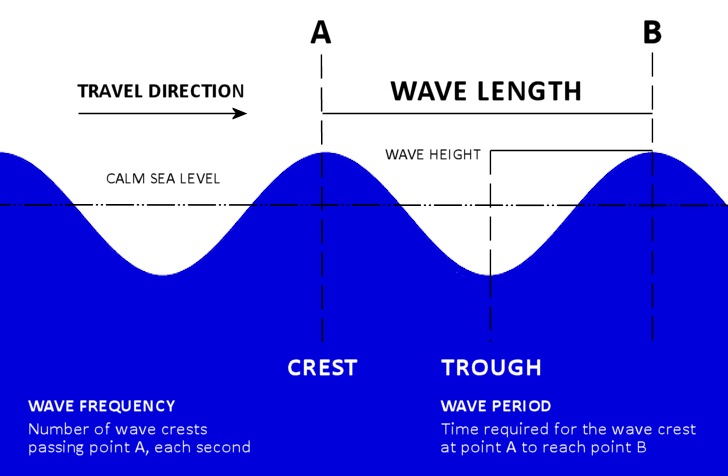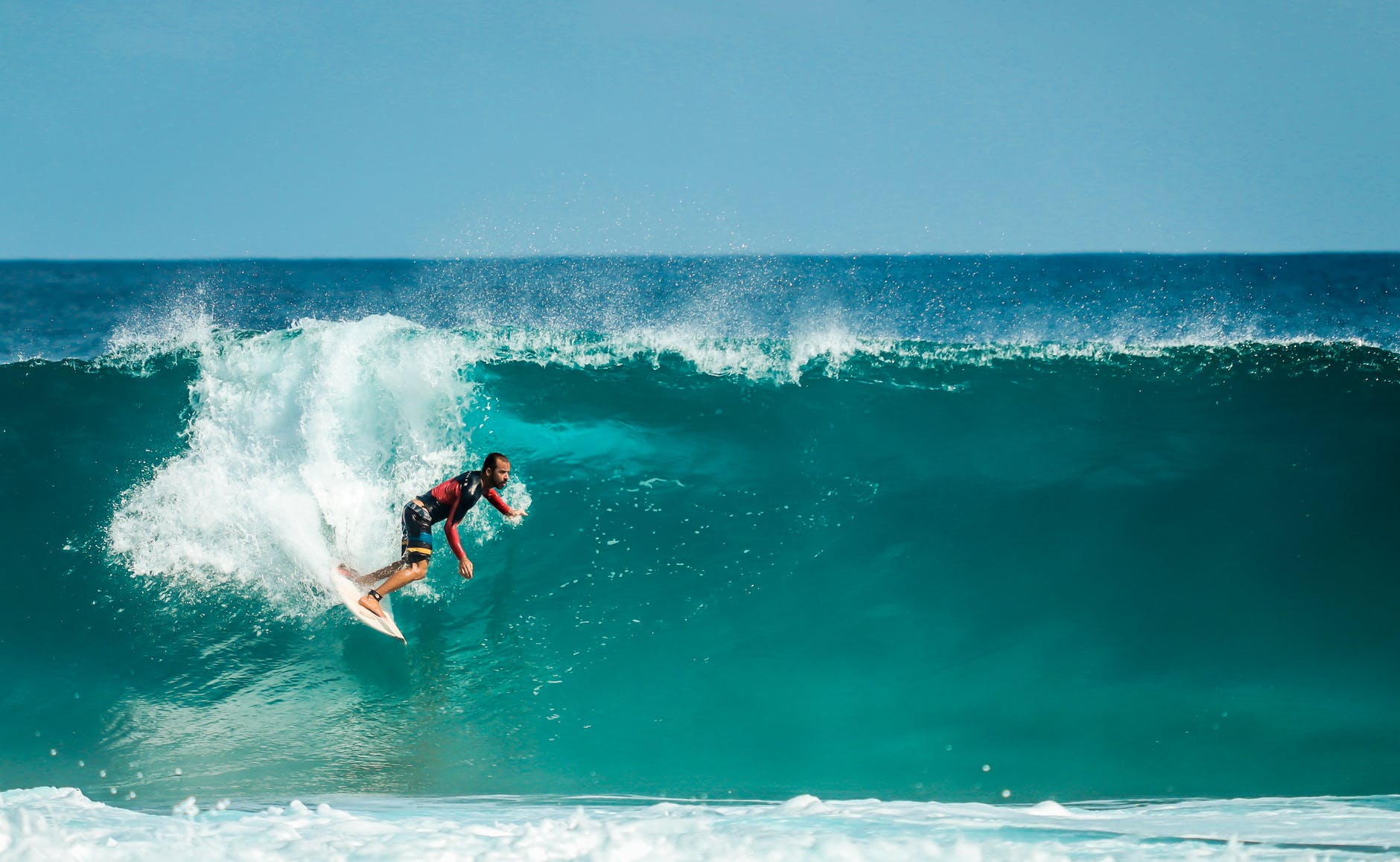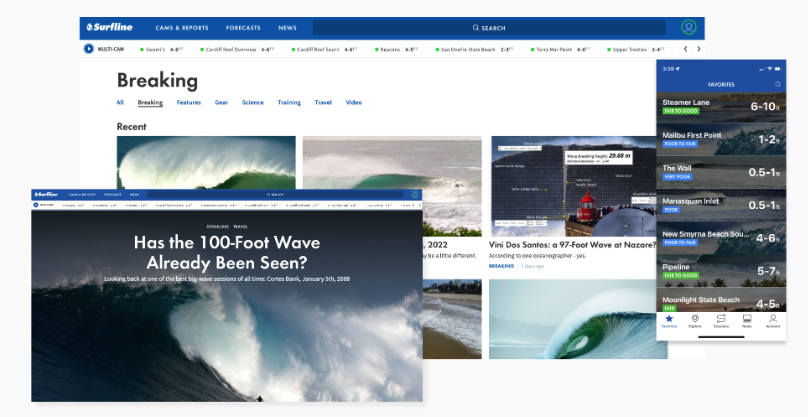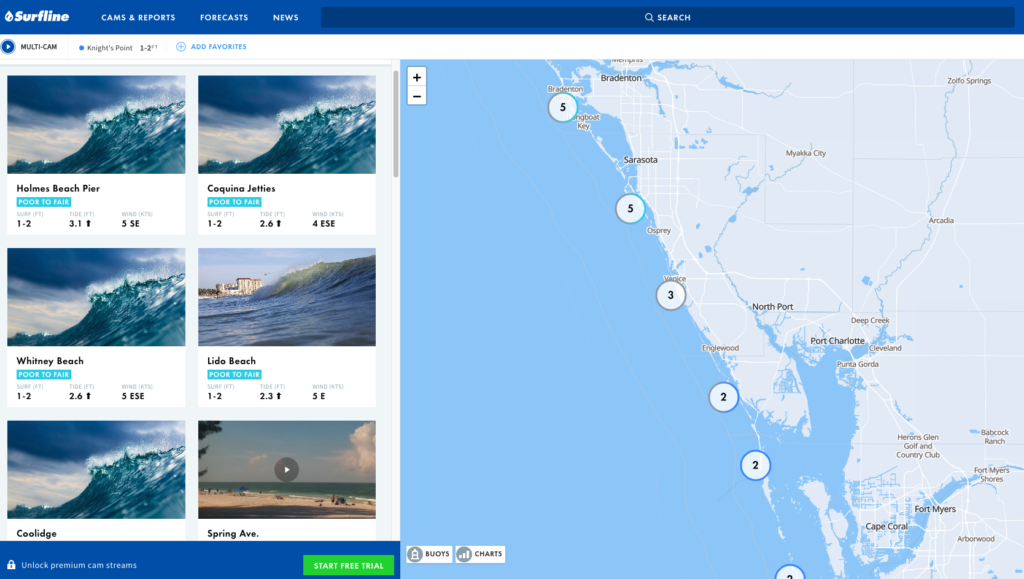I caught my first tube this morning…sir!
Johnny Utah – Point Break
Like I said in my Flag Warning blog, I was gonna have to watch Point Break, and here I am starting this blog a Monday ahead of schedule and watching Johnny bail over and over as he learns to surf. Of course, I’ve seen this movie a dozen times, plus one. I mean….who loves the ocean and hasn’t?
Not gonna lie, I love being on the water and playing in the waves, especially here. California surf and Gulf surf are very different and I love that feeling when you are hanging out under the waves just letting them rock you like a hammock in the wind. It is so soothing. I guess that is why when we are on our paddle boards, we will stop, drop anchor, have a little snack, and then just lay out and let the waves rock our worries away.
We are currently in the market for hardboards now that I tested out my boss’s the other day. I’ve had my inflatable for about a year and a half now and I love it, but I love the differences that come with the hardboard. I don’t know if starting on an iSUP made my balance better, but the ride was like a dream.
I have all sorts of water goals, but due to an Army injury to my hips, my lower body is weaker than I think it should be for some of the things I want to do, so I want to keep working on increasing my strength first. In the last year and a half, I’ve gained a lot of my hip mobility back, but my balance is still increasing and my leg muscles need building. Baby steps. So, in the meantime, I want to keep learning the basics so I am better prepared when I’m ready. You know, it’s like theory class before the internship.
LEARNING TO UNDERSTAND
I think, for me, that it’s important to get a grasp of the basics before I jump on the ride. I know it doesn’t always work that way and for some, just diving in is the best and I really won’t argue that because in all honesty, I excel at sinking or swimming moments. It’s just that if I don’t have to, I would rather build my confidence with basic knowledge.
When I say basic, I mean just that. I don’t want to know everything before trying. Half the fun is learning on the job, but just like you prepare for an interview with the basic knowledge of the company you will be working for, I feel that is a good start to anything. I researched paddle boards before I bought them to make sure I bought the one that would fit the activity I wanted to do and that saved me a lot of money. Learning about the different lengths, noses, fin types, etc, made a difference.
WHERE TO START
For me, I started with understanding the ecosystem I was going to be playing in. Do I know it like the back of my hand? Nope, but I am familiar enough to reason when necessary. I figure the rest will become clear and stick as time and experience go on.
Next, I took the Master Naturalist courses to really dig deeper into understanding ALL the environments I will be living in and how they connect to each other. I also did a lot of networking when we first made the final decision to move here back in early 2021. I started following pages, reaching out with questions, and along the way, I made some really good friends.
That month we stayed here was also a great benefit. We had enough time to explore and find the beaches we liked so we knew where to look for housing. Took tours and saw the potential of this being a side job when I was on school break. Turns out, that a lot of teachers do this. Great minds right?
Now, I’m writing blogs. This is for two reasons, one, to share and express my findings just living here in Florida, and two, to share and teach about all the amazing things I find and need to learn about myself. For me, learning is part of the process of teaching. As a teacher, I may know a subject or topic, but while creating the lessons, I gain even more knowledge and understanding. I find ways of connecting to the subject instead of just learning about it. It’s a full-on relationship.
NEXT ON MY LIST – WAVES
While writing the Flag Warning blog, I had more questions about wave size, and how to understand what is considered calm or rough, and then that lead to other questions and well, TEACHING OPPORTUNITY!
I found a few sites that helped me to understand waves and how to read the reports, because I wanted to take my paddleboard out to the gulf side of Don Pedro the other day and I just wasn’t sure or didn’t feel confident in what I was wanting to do. I may need an experienced buddy to show me the way the first few times. So where there isn’t a buddy, there is the internet.
WAVE BASICS

First, waves are measured in meters. A little math class here, a meter is 3.2 feet. So, a 2-meter wave is almost 6.5 ft. Class dismissed. Now, let’s talk about the design or structure of a wave.
- STILL WATER LEVEL is where the water surface would be if there was no wave and the water was calm.
- CREST is the highest point of the wave.
- TROUGH is the lowest point of the wave or the lowest point between one wave and the next.
- WAVE HEIGHT is the distance between the crest and the trough.
- WAVELENGTH is the distance between the same spot on two consecutive waves. Crest to Crest or Trough to Trough.
- WAVE STEEPNESS is the ratio of wave height to wavelength (H/L). Waves break if the wave is too steep or exceeds a ratio of 1/7.
- FACE is the front side of a breaking wave.
- WAVE PERIOD is the time it takes for a particular part of a wave to move from point A to B
There is a lot more behind waves that we could learn about, but we are here for the basics, right? I mean the rest has a lot of math and terms that are more in dealing with an oceanography lesson and beyond what we need to know at this point. Now, if I got into scuba diving (also on my list), I might dig a little deeper then. For now, we just need to understand the basic structure of the wave.
SURF REPORTS
Back in the day, before internet surfing, surfers would use weather reports and tide charts to forecast the best surfing spots or just by grabbing their board and cruising PCH, looking at the beach, and scouting the waves. Today, surfers look at wave height, swell direction, the tide, and paddlers like me, wind direction. I plan my route based on the wind. I’m okay going in the wind and getting my workout at the beginning of the tour but prefer a little help from the wind on the back end of that tour. There are a variety of apps to help you plan your trip and save you time and gas money.
Swell Height
The swell height is the combination of wave height and swell period, or the time for one wave to reach the same point as the wave in front of it. The longer the swell period the faster and more powerful the waves are going to be. An example I found to explain this on a surf page was that if a wave is 2ft and has a 15-second period, it is coming from farther away and will have the results of a more powerful wave, whereas the same wave with a 5-second period will be weak because this shorter wave was most-likely caused by a storm nearby and hasn’t traveled far enough to gain speed and power like the one traveling longer distances due to ground swells.
A ground swell is also created by a storm, but they are at least 2,000 miles away and have built up strength and speed.
Swell Direction
Swell or wave direction will make the waves break differently as it approaches the shoreline. It determines the direction the swell is coming and is measured in directions like Southwest or Northwest. It is preferred that the swell hits you directly and not from an angle. Apparently angled swells leave weak waves. I have seen this on my tours when the waves are angled and break quickly or are sporadic in strength.
Wind Direction


Ideal conditions for surfing is no wind, but for us paddlers, a slight wind or breeze that blows in the direction we are going is ideal. Honestly, I enjoy riding a little rocky wave action, just not paddling against it. In the surfing world, no wind is referred to as glassy conditions and is a surfer’s dream. If you think about it, this makes sense. Even a little breeze would be nice but when the wind makes things choppy, I can’t imagine it being the best day ever moment.
What we are looking for are on-shore winds and off-shore winds. On-shore winds are winds that move from the ocean towards the shore and are not ideal for surfers due to the choppy nature I mentioned previously. Additionally, they break up the swells, making them smaller. Apparently, those who enjoy doing tricks with their boards are okay with a little on-shore wind as it helps to keep the board glued to their feet.
Off-shore winds are the preferred wind if you can’t have “no wind” conditions. These winds blow from the opposite direction. They blow from the land and head out to sea. These winds can contribute to how well-groomed the waves are. Like everything, too much can be a bad thing. If the winds are too hard, surfers can be blown off their boards as they grab a wave or even sprayed by water from the crest making visibility difficult.
Most surf spots will be glassy and calm in the early morning hours, picking up throughout the day, and then calming down again in the evening hours. I haven’t paddled in the evenings, but I can say that things are calmer in the morning for us, even at 9 in the morning.
Tide
Tide can affect the way a wave breaks. This isn’t something that is as cut and dry as everything else. This is more of a “get to know your area” thing. Some spots do better with a high tide while others might do better during a low to medium tide.
It’s all about knowing your spot. If you have a lot of sand bars at your spot, you might try during a medium to high tide because they may make waves close out or break all at once. Then there are reef breaks which work best on low to medium because they cause the wave to slow down or go flat, but always use caution when surfing a reef break due to the danger factor. If you have ever been pushed into coral by waves, you’d understand. I talked about how tides work in my blog on Tides, Currents, and Waves in case you missed it.
SURF APP
I use a few apps for work, mainly Windy to check the wind direction and speed during my tours so I can plan the layout of our trip over the whole two and half hours. However, it doesn’t provide a full service surf report. Don’t worry though, I found an awesome one called SURFLINE. I was going to keep looking at other apps, but honestly, this one has everything.
- Gives current conditions in your area
- Has Webcams for some beaches
- You can playback your session via select webcams
- News and Stories
- Long-Range Forecasts
- Connects to your Apple or Garmin watch
- Works on both iPhone and Android
- Has both mobile and desktop platforms
- You can pick and set your favorite spots
With the FREE version, you get three free surf checks a week. Beyond that, you have to pay for the premium, which only fair because it is obvious they put a lot into this app for surfers. The premium account adds to the user benefits with unlimited surf checks, ad-free and premium cams, a forecast team, and exclusive forecast tools. The cost is $99 for the year or .27c a day, if you pay for the annual, which will save you $56 from the monthly option of $12.99 a month.
Personally, I’m going to start with the free version just to get use to looking at it and reading the reports. Once I get to the point that I am going out more often then I will probably get a month subscription during those times, which for me may only but during my summer break from teaching. A yearly may or may not be in my future, but for some, getting the annual subscription may be the best option. I think it is definitely worth it either way.
If you know of other surf forecasting apps I should look at, let me know in the comment section below. I just stopped here because it had everything I could want at this point. I am sure there are others that are just as useful.
YOUTUBE PLAYLIST
So now that I have been paddle boarding for a year and a half now, not including the few times in Colorado, I feel I am ready to add to my adventure options and will start learning to SUP Surf. Eventually I want to learn to surf but I am thinking next year. I feel this is going to be a great transition between the two as I move myself out of the estuaries and intercoastal systems and into the gulf.
In the meantime, I am compiling YouTube videos to introduce me to the next natural evolutionary stage of our life on the water. You can check them out here…SURFING Playlist and SUP SURFING Playlist and if you want to recommend some to me that would be great. Tag me in the comment section of the video or paste the link in the comment section below.
In the meantime, get out there, explore your natural world and think about how you can level up your nature jam. And as always, if I made a mistake or you feel I should add more information, let me know. It’s always about gaining accurate knowledge and growing. Until next time…
Stay Salty and Stay Connected
Kelley (Salty.Mhic)
1,043 total views, 1 views today


